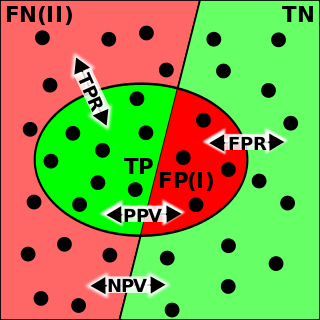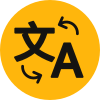
Machine translation is use of computational techniques to translate text or speech from one language to another, including the contextual, idiomatic and pragmatic nuances of both languages.

Optical character recognition or optical character reader (OCR) is the electronic or mechanical conversion of images of typed, handwritten or printed text into machine-encoded text, whether from a scanned document, a photo of a document, a scene photo or from subtitle text superimposed on an image.
Word-sense disambiguation is the process of identifying which sense of a word is meant in a sentence or other segment of context. In human language processing and cognition, it is usually subconscious.
Natural language generation (NLG) is a software process that produces natural language output. A widely-cited survey of NLG methods describes NLG as "the subfield of artificial intelligence and computational linguistics that is concerned with the construction of computer systems that can produce understandable texts in English or other human languages from some underlying non-linguistic representation of information".
Automatic summarization is the process of shortening a set of data computationally, to create a subset that represents the most important or relevant information within the original content. Artificial intelligence algorithms are commonly developed and employed to achieve this, specialized for different types of data.

Machine translation can use a method based on dictionary entries, which means that the words will be translated as a dictionary does – word by word, usually without much correlation of meaning between them. Dictionary lookups may be done with or without morphological analysis or lemmatisation. While this approach to machine translation is probably the least sophisticated, dictionary-based machine translation is ideally suitable for the translation of long lists of phrases on the subsentential level, e.g. inventories or simple catalogs of products and services.
Computer-aided translation (CAT), also referred to as computer-assisted translation or computer-aided human translation (CAHT), is the use of software, also known as a translator, to assist a human translator in the translation process. The translation is created by a human, and certain aspects of the process are facilitated by software; this is in contrast with machine translation (MT), in which the translation is created by a computer, optionally with some human intervention.
BLEU is an algorithm for evaluating the quality of text which has been machine-translated from one natural language to another. Quality is considered to be the correspondence between a machine's output and that of a human: "the closer a machine translation is to a professional human translation, the better it is" – this is the central idea behind BLEU. Invented at IBM in 2001, BLEU was one of the first metrics to claim a high correlation with human judgements of quality, and remains one of the most popular automated and inexpensive metrics.
Various methods for the evaluation for machine translation have been employed. This article focuses on the evaluation of the output of machine translation, rather than on performance or usability evaluation.

Transfer-based machine translation is a type of machine translation (MT). It is currently one of the most widely used methods of machine translation. In contrast to the simpler direct model of MT, transfer MT breaks translation into three steps: analysis of the source language text to determine its grammatical structure, transfer of the resulting structure to a structure suitable for generating text in the target language, and finally generation of this text. Transfer-based MT systems are thus capable of using knowledge of the source and target languages.
Technical translation is a type of specialized translation involving the translation of documents produced by technical writers, or more specifically, texts which relate to technological subject areas or texts which deal with the practical application of scientific and technological information. While the presence of specialized terminology is a feature of technical texts, specialized terminology alone is not sufficient for classifying a text as "technical" since numerous disciplines and subjects which are not "technical" possess what can be regarded as specialized terminology. Technical translation covers the translation of many kinds of specialized texts and requires a high level of subject knowledge and mastery of the relevant terminology and writing conventions.

Microsoft Translator or Bing Translator is a multilingual machine translation cloud service provided by Microsoft. Microsoft Translator is a part of Microsoft Cognitive Services and integrated across multiple consumer, developer, and enterprise products, including Bing, Microsoft Office, SharePoint, Microsoft Edge, Microsoft Lync, Yammer, Skype Translator, Visual Studio, and Microsoft Translator apps for Windows, Windows Phone, iPhone and Apple Watch, and Android phone and Android Wear.
Speech translation is the process by which conversational spoken phrases are instantly translated and spoken aloud in a second language. This differs from phrase translation, which is where the system only translates a fixed and finite set of phrases that have been manually entered into the system. Speech translation technology enables speakers of different languages to communicate. It thus is of tremendous value for humankind in terms of science, cross-cultural exchange and global business.
In natural language processing, textual entailment (TE), also known as natural language inference (NLI), is a directional relation between text fragments. The relation holds whenever the truth of one text fragment follows from another text.
The Europarl Corpus is a corpus that consists of the proceedings of the European Parliament from 1996 to 2012. In its first release in 2001, it covered eleven official languages of the European Union. With the political expansion of the EU the official languages of the ten new member states have been added to the corpus data. The latest release (2012) comprised up to 60 million words per language with the newly added languages being slightly underrepresented as data for them is only available from 2007 onwards. This latest version includes 21 European languages: Romanic, Germanic, Slavic, Finno-Ugric, Baltic, and Greek.
Translation criticism is the systematic study, evaluation, and interpretation of different aspects of translated works. It is an interdisciplinary academic field closely related to literary criticism and translation theory. It includes marking of student translations, and reviews of published translations.
LEPOR is an automatic language independent machine translation evaluation metric with tunable parameters and reinforced factors.

Evaluation of a binary classifier typically assigns a numerical value, or values, to a classifier that represent its accuracy. An example is error rate, which measures how frequently the classifier makes a mistake.
The EuroMatrix is a project that ran from September 2006 to February 2009. The project aimed to develop and improve machine translation (MT) systems between all official languages of the European Union (EU).
Paraphrase or paraphrasing in computational linguistics is the natural language processing task of detecting and generating paraphrases. Applications of paraphrasing are varied including information retrieval, question answering, text summarization, and plagiarism detection. Paraphrasing is also useful in the evaluation of machine translation, as well as semantic parsing and generation of new samples to expand existing corpora.






